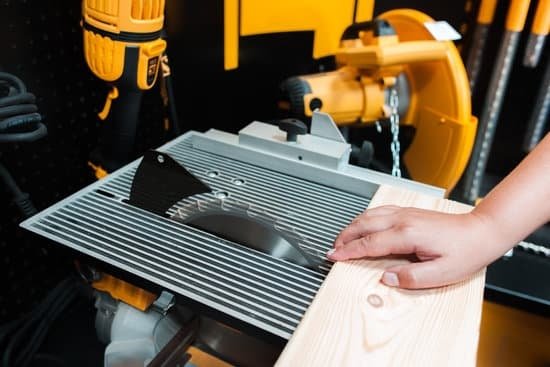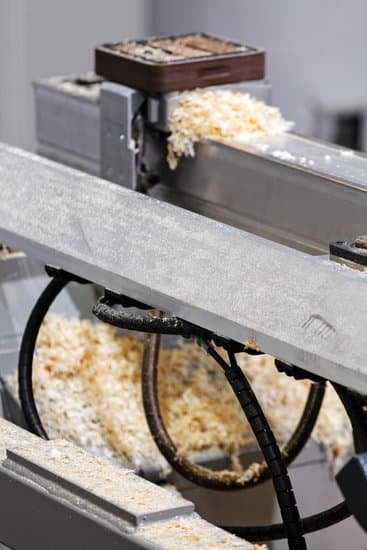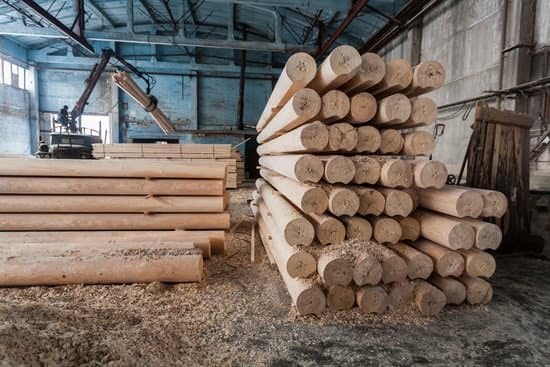For those looking to dive into the world of woodworking, a Woodworkers Starter Kit serves as the essential foundation. This kit includes a carefully curated selection of tools that are crucial for beginners embarking on their woodworking journey. Whether you have a specific project in mind or are simply eager to learn the art of woodworking, a Starter Kit equips you with the necessary tools to kickstart your creative endeavors.
As a beginner, it can be overwhelming to navigate the vast array of tools available in hardware stores. However, with a Woodworkers Starter Kit, you can eliminate the guesswork and ensure that you have the fundamental tools needed for various projects. This comprehensive collection typically includes items such as saws, chisels, planes, measuring tools, and more.
The importance of a Woodworkers Starter Kit lies not only in its convenience but also in its ability to provide beginners with a solid foundation for their woodworking skills. By starting with these essential tools, beginners can familiarize themselves with each one’s purpose and develop foundational techniques. This allows them to gradually expand their skill set and tackle more advanced projects confidently. Moreover, having access to the right tools ensures precision and efficiency in achieving desired results.
With a Woodworkers Starter Kit by your side, you’ll be well-equipped to embark on your woodworking journey. Whether your goal is to create functional furniture pieces or artistic woodcrafts, this introductory section will guide you through everything you need to know about starting off strong in the world of woodworking – from tool selection and safety measures to project ideas and useful resources.
Get ready for an enriching experience filled with creativity and personal satisfaction as you dive into the captivating world of woodworking.
Essential Tools in a Woodworkers Starter Kit
When starting out with woodworking, having the right tools is essential to ensure success and enjoyment in your projects. A Woodworkers Starter Kit should include a selection of basic tools that can handle a variety of tasks. Here are some key tools that every beginner woodworker should have in their kit:
- Hand Saw: A versatile and essential tool for cutting wood into different shapes and sizes. Choose a hand saw with fine teeth for smoother cuts.
- Chisels: Chisels are used for shaping, carving, and creating joinery in woodworking projects. Starting with a few different sizes will help you tackle various tasks effectively.
- Mallet or Hammer: Necessary for striking chisels or driving nails into wood. A wooden mallet is recommended as it minimizes damage to delicate chisel handles.
- Marking and Measuring Tools: These include a tape measure, combination square, marking gauge, and pencil. Accurate measurements are crucial for achieving precise cuts and joinery.
- Clamps: Clamps are vital for holding pieces of wood securely while gluing, clamping joints, or assembling projects. Start with a few different types such as bar clamps or spring clamps.
- Cordless Drill: Whether you’re drilling pilot holes or attaching screws, a cordless drill is an invaluable tool that should be in every woodworker’s kit.
- Sanding Blocks or Orbital Sander: Smooth down rough surfaces using sanding blocks or invest in an orbital sander for faster results when working on larger projects.
- Safety Equipment: Safety goggles, ear protection, and a dust mask should never be overlooked when working with power tools or hand tools that produce particles or noise.
By having these essential tools in your Woodworkers Starter Kit, you’ll be equipped to take on a broad range of woodworking projects with confidence. As your skills and interests progress, you can add more specialized or advanced tools to expand your capabilities and tackle more complex projects. Remember to invest in high-quality tools that will last, as they are an investment in your craft and woodworking journey.
Choosing the Right Wood
Types of Wood Species
When choosing wood for a woodworking project, it’s important to consider the characteristics of different wood species. Each species has its own unique qualities and abilities, making it suitable for certain types of projects. Some common wood species used in woodworking include oak, pine, mahogany, maple, and cherry.
Oak is a popular choice for furniture making due to its durability and strength. It has a distinctive grain pattern that adds visual appeal to the finished product. Pine is another common choice that is known for its affordability and ease of working with. However, pine is not as durable as hardwoods like oak or mahogany.
Mahogany is often chosen for high-end furniture projects as it has a rich color and beautiful grain pattern. Maple is known for its hardness and resistance to wear and tear, making it suitable for items like cutting boards or tool handles. Cherry wood is prized for its warm color and smooth texture, making it ideal for creating elegant furniture pieces.
Finding the Right Wood
When selecting the right wood species for your project, consider factors such as the intended use of the item, the desired appearance, and your skill level as a woodworker. For example, if you’re a beginner working on your first project, you might want to start with an easier-to-work-with wood like pine or poplar.
Another factor to consider is availability. Some woods may be more accessible in certain regions than others. Research local lumber suppliers or online retailers that offer a variety of wood species to choose from.
Wood Selection Tips
Here are some additional tips to help you choose the right wood:
- Visit local woodworking shops or attend craft fairs to see different types of woods in person.
- Consider the overall style or aesthetic of your project and choose a wood species that complements it.
- Take into account the color, grain pattern, and texture of the wood when making your selection.
- Check for any defects or imperfections in the wood that could affect its usability or appearance.
- If possible, talk to experienced woodworkers or seek advice from online forums to get recommendations on suitable wood species for your project.
Remember, choosing the right wood species is an important step in ensuring the success and longevity of your woodworking project. With careful consideration and research, you’ll be able to find a wood species that meets your specific needs and allows you to create beautiful and functional pieces.
Safety First
Woodworking can be an enjoyable and fulfilling hobby, but it is important to prioritize safety at all times. Whether you are a beginner or an experienced woodworker, understanding and following safety measures is essential to prevent accidents and injuries. This section will provide important information on safety measures and protective gear that every woodworker should be aware of and adhere to.
One of the most crucial safety measures in woodworking is wearing personal protective equipment (PPE). This includes eye protection, such as safety glasses or goggles, to shield your eyes from flying debris or wood chips. It is also recommended to wear a dust mask or respirator to protect yourself from inhaling harmful dust particles. Additionally, wearing hearing protection, like earplugs or earmuffs, can help reduce exposure to loud noises produced by power tools.
In addition to PPE, it is important to maintain a clean and organized workspace to minimize the risk of accidents. Keep your work area free from clutter and ensure that there is adequate lighting for clear visibility. Sharp tools should always be properly stored in a secure location when not in use.
Furthermore, understanding how to operate woodworking tools safely is crucial. Always read the manufacturer’s instructions before using any tool and ensure that you have received proper training on their operation if needed. Use clamps or other securing mechanisms when working with materials to prevent them from moving unexpectedly. Also, make sure your tools are kept sharp as dull blades can cause accidents due to slipping or binding.
| Protective Gear | Description |
|---|---|
| Safety Glasses or Goggles | Protects the eyes from flying debris or wood chips |
| Dust Mask or Respirator | Prevents inhalation of harmful dust particles |
| Hearing Protection (Earplugs or Earmuffs) | Reduces exposure to loud noises produced by power tools |
Remember, safety should always be a top priority in woodworking. Familiarize yourself with safety measures, invest in the appropriate protective gear, and ensure that you are using your tools correctly. By doing so, you can enjoy the art of woodworking while minimizing the risk of accidents and injuries.
Additional Tools and Accessories
In addition to the essential tools mentioned earlier, there are several optional tools and accessories that can enhance the woodworking experience for beginners. While these items may not be necessary for every project, they can certainly make certain tasks easier or provide more versatility in your woodworking projects. Here are some additional tools and accessories you may consider adding to your Woodworkers Starter Kit:
- Power Tools: Power tools can greatly speed up your woodworking process and make it more efficient. Some commonly used power tools include a circular saw, router, jigsaw, and power drill. These tools can help you cut through wood quickly and accurately, create intricate designs, and perform various other tasks in your projects.
- Clamps: Clamps are essential for holding pieces of wood together securely during gluing or clamping operations. They come in different sizes and types such as C-clamps, bar clamps, pipe clamps, and quick-release clamps. Having a variety of clamps in different sizes can ensure that you have the right tool for any clamping situation.
- Sandpaper and Sanding Tools: Sanding is an important step in achieving a smooth finish on your woodworking projects. A variety pack of sandpaper with different grits (ranging from coarse to fine) will allow you to tackle various sanding tasks. Additionally, investing in a sanding block or an orbital sander can help make the sanding process more efficient and effective.
- Measuring and Marking Tools: Accurate measuring and marking are vital in woodworking projects to ensure precise cuts and joints. Essential measuring tools include a tape measure, combination square, try square, marking gauge, and carpenter’s pencil. Having these tools at hand will help you achieve accurate measurements and markings every time.
- Finishing Supplies: Once you have completed your woodworking project, it’s important to apply a finish to protect the wood from damage and enhance its appearance. Some common finishing supplies include varnish, stain, paintbrushes, and sanding sealer. Investing in a variety of finishes and brushes will help you achieve the desired look for your projects.
By expanding your Starter Kit to include these additional tools and accessories, you can increase the range of woodworking projects you can tackle and improve the quality of your work. However, it’s important to remember that these tools are optional and should be acquired based on your specific needs and interests as a woodworker.
As you gain more experience and take on more complex projects, you may find that adding some or all of these tools to your collection becomes beneficial.
Building Your Workspace
Building a dedicated workspace is essential for any woodworker, whether you are just starting out or have been woodworking for years. Having a designated area for your woodworking projects not only keeps your tools organized and easily accessible but also provides a safe and efficient environment to work in. Here are some steps to consider when building your woodworking workspace:
- Choose the Right Location: Select an area that is well-ventilated and has enough space to accommodate your projects and tools. Ideally, it should have good lighting and be away from distractions or high traffic areas.
- Workbench: The centerpiece of any woodworking workspace is a sturdy workbench. It should have a flat surface that can withstand heavy use and weight. Consider the height of the workbench to ensure it’s comfortable for you to work on.
- Tool Storage: Invest in storage solutions such as tool cabinets, wall-mounted racks, or pegboards to keep your tools organized and easily accessible. Arrange them in a way that makes sense for your workflow, grouping similar tools together.
- Power Tools Setup: If you have power tools such as table saws or drill presses, plan their placement with safety in mind. Ensure they have adequate space around them for operation and proper ventilation to dissipate heat.
- Dust Collection System: Woodworking generates a lot of dust and debris, which can be harmful if inhaled regularly. Consider installing a dust collection system, such as a shop vacuum or an air filtration unit, to minimize dust in your workspace.
- Safety Measures: Incorporate safety measures into your workshop design by having fire extinguishers, first aid kits, and emergency exits easily accessible. Install proper lighting throughout the workspace to prevent accidents due to poor visibility.
- Workzone Organization: Keep frequently used hand tools within arm’s reach of your workbench by using tool trays or hanging them on wall hooks near the bench.
- Material Storage: Allocate space for storing your wood and other materials. Consider using lumber racks or storage bins to keep them organized and protected from moisture or damage.
- Comfort and Convenience: Incorporate features that enhance your comfort, such as a comfortable work chair, a small fridge for cold drinks, and adequate heating or cooling systems depending on the climate in your area.
Remember that building your woodworking workspace is an ongoing process. As you gain experience and acquire new tools, you may need to adjust and optimize your layout. Regularly review and update the organization of your workspace to maximize efficiency and safety.
Recommended Tools for Building Your Workspace
- Workbench
- Tool cabinets or storage solutions
- Pegboards or wall-mounted tool racks
- Shop vacuum or air filtration unit
- Lumber racks or storage bins
- Comfortable work chair
- Fridge for cold drinks
- Proper lighting fixtures
Learning Resources
Books
Books are a valuable resource for beginner woodworkers as they provide in-depth knowledge and step-by-step instructions on various woodworking techniques. Some highly recommended books for beginners include “The Complete Manual of Woodworking” by Albert Jackson and David Day, “Understanding Wood: A Craftsman’s Guide to Wood Technology” by R. Bruce Hoadley, and “The Essential Woodworker” by Robert Wearing. These books cover a wide range of topics including tool usage, joinery techniques, wood selection, and finishing methods.
Online Tutorials
In addition to books, online tutorials have become increasingly popular among beginners due to their convenience and accessibility. Websites like YouTube offer an extensive library of woodworking tutorial videos, ranging from basic techniques to advanced projects. Channels such as WoodWorkers Guild of America, The Wood Whisperer, and Paul Sellers provide comprehensive tutorials suitable for beginners. These online resources not only teach woodworking skills but also inspire creativity through project ideas and tips from experienced woodworkers.
Classes
For those who prefer a more hands-on learning experience or want personalized guidance, taking a woodworking class can be highly beneficial. Local vocational schools or community centers often offer introductory classes where beginners can learn essential skills under the guidance of experienced woodworkers. Additionally, there are specialized woodworking schools that provide comprehensive courses for all skill levels. These classes not only teach fundamental techniques but also foster a sense of community among fellow woodworkers.
By utilizing these learning resources, beginners can further develop their woodworking skills and gain confidence in undertaking more complex projects. It is important for aspiring woodworkers to approach learning with an open mind and willingness to practice diligently in order to master the craft over time.
Projects for Woodworkers Starter Kit
Woodworking is not just a practical skill, but also a creative outlet that allows individuals to bring their ideas to life. For beginners who are just starting out in the world of woodworking, having a set of projects that they can tackle with their Woodworkers Starter Kit is essential. These projects not only provide an opportunity to practice and hone their skills, but also allow them to create something tangible and useful.
One project that is perfect for beginners with a Woodworkers Starter Kit is building a simple wooden shelf. With just a few basic tools such as a saw, drill, and measuring tape, beginners can create a functional piece of furniture that can be used to display books, photos, or other decorative items.
By following step-by-step instructions and taking precise measurements, beginners can gain confidence in using their tools and learn fundamental woodworking techniques such as cutting, drilling, and sanding.
Another beginner-friendly project that can be accomplished with the Woodworkers Starter Kit is building a wooden planter box. This project not only introduces beginners to the concept of joinery by using techniques such as butt joints or miter joints, but also allows them to experiment with different wood species and finishes.
By constructing a planter box, beginners can develop an understanding of how different woods behave when exposed to moisture and sunlight, and learn how to protect their creations from the elements.
Finally, for those who are looking for a more challenging project that tests their skills with their Woodworkers Starter Kit, building a small wooden table or bench is an ideal choice. This project requires more advanced woodworking techniques such as creating mortise-and-tenon joints or installing drawers or shelves. By undertaking this type of project, beginners can push themselves to learn new skills and expand their knowledge about woodworking joinery.
Maintenance and Care
Proper maintenance and care of your tools is essential for prolonging their lifespan and ensuring that they remain in optimal condition. When it comes to woodworking tools, taking the time to clean, sharpen, and store them correctly can make a significant difference in their performance and longevity. Here are some tips for maintaining your Woodworkers Starter Kit:
- Clean regularly: After each use, it is important to clean your tools thoroughly. Remove any sawdust, dirt, or debris from the surfaces using a brush or compressed air. For blades and cutting surfaces, use a solvent or cleaning agent specifically designed for woodworking tools. Wipe down all metal surfaces with a cloth to remove excess moisture.
- Sharpen blades regularly: Dull blades not only affect the quality of your work but also put unnecessary strain on the tool itself. Keep a sharpening stone or honing guide in your kit to maintain the edges of chisels, planes, and saws. Follow manufacturer instructions carefully when sharpening to avoid damaging the blade.
- Store properly: Storing your tools correctly is crucial for preventing damage and maintaining their condition. Make sure they are stored in a dry environment to prevent rust and corrosion. Use protective cases or bags for smaller hand tools like chisels and screwdrivers.
- Rust prevention: Apply a thin coat of lubricant or rust inhibitor to metal surfaces regularly to prevent rust from forming. This is particularly important if you live in a humid climate or have limited access to climate-controlled storage.
- Handle with care: Treat your tools with respect and be mindful of how you handle them during use. Avoid dropping them, using excessive force when operating them, or exposing them to extreme heat or cold.
By following these maintenance tips, you can ensure that your Woodworkers Starter Kit remains in top shape for years to come, saving you time and money in replacements while also preserving the quality of your woodworking projects.
Conclusion
In conclusion, a Woodworkers Starter Kit is an essential resource for beginners in the woodworking field. It provides them with the necessary tools and knowledge to embark on their creative journey. With the right tools, appropriate wood, safety measures, and a dedicated workspace, aspiring woodworkers can explore their creativity and experience personal satisfaction in creating unique and functional pieces.
Starting with a Woodworkers Starter Kit allows beginners to have all the essential tools they need at their disposal. This eliminates the confusion and frustration of trying to figure out what tools to buy individually. The comprehensive list of must-have tools ensures that beginners are equipped with everything they need to get started on their projects right away.
Moreover, a Woodworkers Starter Kit offers endless potential for creativity. From small crafts to larger furniture pieces, beginners can explore different techniques and styles as they gain experience. Working with wood provides a sense of accomplishment as you see your ideas come to life through your own hands. It allows you to create practical items for everyday use or even unique pieces of art that showcase your personal style.
Therefore, if you have been considering diving into the world of woodworking but haven’t known where to start, investing in a Woodworkers Starter Kit is the perfect way to begin your journey. Not only will it provide you with all the necessary tools and resources, but it will also ignite your creativity and bring you personal satisfaction throughout the process. So go ahead, take that first step and unlock your potential as a woodworker.
Frequently Asked Questions
What woodworking tools should I get first?
When starting out in woodworking, it’s essential to have a few basic tools to get you started on your projects. The first tool you should get is a reliable workbench, which will serve as a sturdy and stable surface for your woodworking projects. Additionally, you’ll need a set of essential hand tools such as chisels, mallets, hand planes, and saws.
These tools will allow you to shape and cut wood effectively. A good drill is also crucial for creating holes in wooden pieces or joining them together. Finally, investing in a quality tape measure, square, and clamps will help ensure accuracy and precision in your work.
What do I need to start a woodworking hobby?
To start a woodworking hobby, there are several key items you’ll need. First and foremost is space – whether it’s a small dedicated workshop or just an area in your garage or basement, having enough room to comfortably work on your projects is important. Next, ensure that you have proper lighting to illuminate your workspace adequately.
Good lighting enables you to see the details of what you’re working on more clearly and reduces the risk of accidents. It’s also vital to have access to power outlets for operating electrical tools like drills or sanders. Lastly, having an organized storage system for your tools and materials will make it easier for you to find what you need when working on different projects.
Can I teach myself woodworking?
Yes, it is entirely possible to teach yourself woodworking! While taking formal classes or attending workshops can certainly be helpful, many skilled woodworkers are entirely self-taught. With the vast amount of online resources available today – from instructional videos and forums to comprehensive tutorials – learning woodworking techniques has never been more accessible.
Along with these resources, starting with simple projects and gradually increasing their complexity allows beginners to learn new skills at their own pace while gaining confidence along the way. Practice and patience are key when teaching yourself woodworking; don’t be discouraged by mistakes but rather embrace them as opportunities for learning and improvement.

Hi everyone! I’m a woodworker and blogger, and this is my woodworking blog. In my blog, I share tips and tricks for woodworkers of all skill levels, as well as project ideas that you can try yourself.





